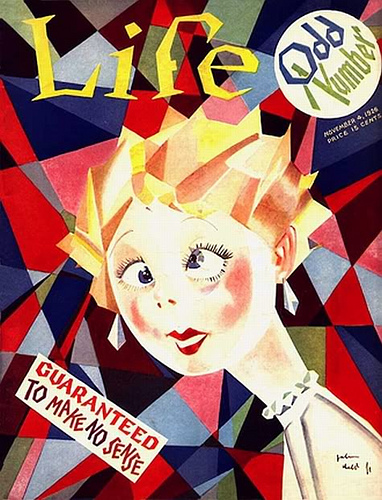This is a post that continues my thinking from that previous post about Basie and Jazz BANG, but here I work specifically with Count Basie and his influences. This post is a product of some discussion on facebook about Basie (and my previous 8tracks post), and really has grown out of this Basie session at Jazz BANG. It does of course, also develop the theme of innovation, improvisation and impersonation – step stealing and cultural appropriation/transmission in vernacular music and dance culture. And we all know how obsessed I am with THAT stuff. Love love love.
This post is shaped by some useful comments and references supplied by Andrew Dickeson on the Facey, in response to my 8tracks post, and more specifically, to my question about Fletcher Henderson’s influence on Basie and other musicians.
I’ve written about this version of Honeysuckle Rose many times before (here and here), I find myself using various versions of this song for teaching all the time, and I DJ with it a lot. I am very obsessed. I’m also fascinated by Fletcher Henderson, and the way he went from big name arranger and band leader to ‘joining’ Benny Goodman’s band. His life (which was somewhat tragic), and the role John Hammond played, really catch my interest. Also he had fucking MAD skills.
So here is an excerpt from a useful book Andrew hooked me up with, and an 8track set I put together to illustrate this section:
The early Basie book was casual and frequently borrowed, either in bits and pieces or, sometimes, whole. The ultimate sources was often Fletcher Henderson’s orchestra. Basie’s arrangement of Honeysuckle Rose is a slight simplification of Henderson’s. Basie’s Swinging the Blues comes from Henderson’s Hot and Anxious and Comin’ and Goin’*. Jumpin’ at the Woodside (as Dan Morgenstern points out) comes from the Mills Blue Rhythm Band’s Jammin’ for the Jackpot, with perhaps a glance at the arrangement of Honeysuckle Rose that Benny Carter did for Coleman Hawkins and Django Reinhardt. Jive at Five from the same ensemble’s Barrelhouse. The Mills’ Blue Rhythm Band was a Henderson-style orchestra.
*A more complete history of this piece is interesting and revealing. The 1929 Ellington-Miley Doin’ the Voom Voom, in AABA song form (an obvious Cotton Club specialty), became the 1931 Horace Henderson-Fletcher Henderson pair of pieces called Hot and Anxious (a blues) and Comin’ and Goin’ (partly a blues). those pieces all added the riff later called In The Mood. These, in turn, became Count Basie’s Swinging The Blues. Meanwhile, Doin’ The Voom Voom had obviously inspired the Lunceford-Will Hudson specialties White Heat and Jazznocracy, and these in turn prompted the Harry James-Benny Goodman Life Goes to a Party. In the last piece, the background figure (an up-and-down scalar motive) to one of the trumpet solos on Voom Voom had been slightly changed and elevated into a main theme.
(Williams, Martin. The Jazz Tradition, 1992. p117-118.)
[Edit: I’ve added the Fletcher Henderson version because I’d FORGOTTEN it. It’s currently my favourite.]
Honeysuckle Rose 1937 Count Basie and his Orchestra (Buck Clayton, Joe Keyes, Carl Smith, George Hunt, Dan Minor, Caughley Roberts, Herschel Evans, Lester Young, Jack Washington, Claude Williams, Walter Page, Jo Jones) 3:00 The Complete Decca Recordings (disc 01)
Honeysuckle Rose 1939 Benny Goodman and his Orchestra (Jimmy Maxwell, Johnny Martel, Ziggy Elman, Ted Vesely, Red Ballard, Vernon Brown, Toots Mondello, Buff Estes, Jerry Jerome, Bus Bassey, Fletcher Henderson, Charlie Christian, Artie Bernstein, Nick Fatool) 3:04 Classic Columbia and Okeh Benny Goodman Orchestra Sessions (1939-1958) (Mosaic disc 01)
Honeysuckle Rose 1932 Fletcher Henderson and his Orchestra (Rex Stewart, Russell Smith, Bobby Stark, J.C. Higginbotham, Sandy Williams, Russell Procope, Hilton Jefferson, Coleman Hawkins, Fletcher Henderson, Freddie White, John Kirby, Walter Johnson, Katherine Handy) 3:14 Classic Coleman Hawkins Sessions 1922-1947 (Mosaic disc 03)
Swingin’ The Blues 1938 Count Basie and his Orchestra 2:48 The Complete Decca Recordings (disc 02)
Hot And Anxious 1931 Fletcher Henderson and his Orchestra (Rex Stewart, Russell Smith, Bobby Stark, Claude Jones, Benny Morton, Russell Procope, Harvey Boone, Coleman Hawkins, Clarence Holiday, John Kirby, Walter Johnson, Bill Challis, Don Redman, Horace Henderson) 3:25 Classic Coleman Hawkins Sessions 1922-1947 (Mosaic disc 02)
Comin’ And Goin’ 1931 Baltimore Bellhops (Fletcher Henderson, Rex Stewart, Benny Carter, Coleman Hawkins, John Kirby) 3:12 The Fletcher Henderson Story (disc 02)
Doin’ The Voom Voom – Take 1 1929 Duke Ellington and his Orchestra 3:08 The Duke Ellington Centennial Edition: Complete RCA Victor Recordings (disc 02)
White Heat 1939 Jimmie Lunceford 2:31 Rhythm Is Our Business
Life Goes To A Party 1938 Harry James and his Orchestra (Buck Clayton, Vernon Brown, Earl Warren, Jack Washington, Jess Stacy, Walter Page, Jo Jones) 2:52 Life Goes To A Party
Life Goes To A Party 1938 Benny Goodman and his Orchestra (Harry James, Ziggy Elman, Chris Griffin, Red Ballard, Vernon Brown, Hymie Schertzer, George Koenig, Art Rollini, Babe Russin, Jess Stacy, Allen Reuss, Harry Goodman, Gene Krupa, Horace Henderson, Edgar Sampson) 4:17 Benny Goodman Live At Carnegie Hall (disc 1)
Jumpin’ At The Woodside 1939 Count Basie and his Orchestra 3:10 The Complete Decca Recordings (disc 02)
Jammin’ For The Jackpot 1937 Mills Blue Rhythm Band (Charlie Shavers, Carl Warwick, Harry Edison, Al Cobbs, Wilbur DeParis, Tab Smith, Eddie Williams, Ben Williams, Harold Arnold, Billy Kyle, Danny Barker, John Williams, Lester Sonny Nichols, Chuck Richards, Lucky Millinder) 2:30 Mills Blue Rhythm Band: Complete Jazz Series 1936 – 1937
Honeysuckle Rose 1937 Coleman Hawkins and his All-Star Jam Band (Benny Carter, Andre Ekyan, Alix Combelle, Stéphane Grappelli, Django Reinhardt, Eugene d’Hellemmes, Tommy Benford) 2:47 Ken Burns Jazz Series: Coleman Hawkins
Jive At Five 1939 Count Basie and his Orchestra 2:51 The Complete Decca Recordings (disc 03)
Barrelhouse 1936 Mills Blue Rhythm Band (Lucky Millinder, Henry ‘Red’ Allen) 3:05 Mills Blue Rhythm Band: Harlem Heat
Jumpy Nerves 1939 Wingy Manone and his Orchestra (Chu Berry, Buster Bailey, Conrad Lanoue, Zeb Julian, Jules Cassard, Cozy Cole) 2:53 Classic Chu Berry Columbia And Victor Sessions (Mosaic disc 05)
In The Mood Bob Wills and his Texas Playboys 3:19 The Tiffany Transcriptions (vol 9)

















